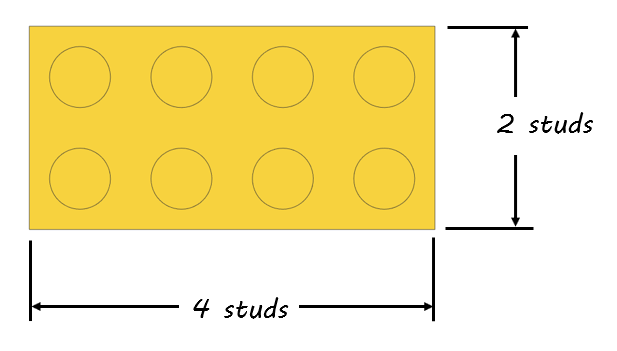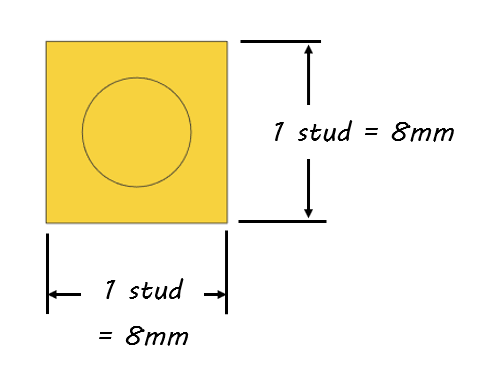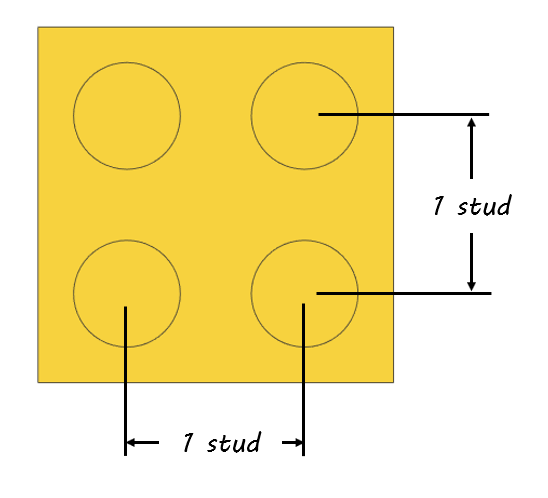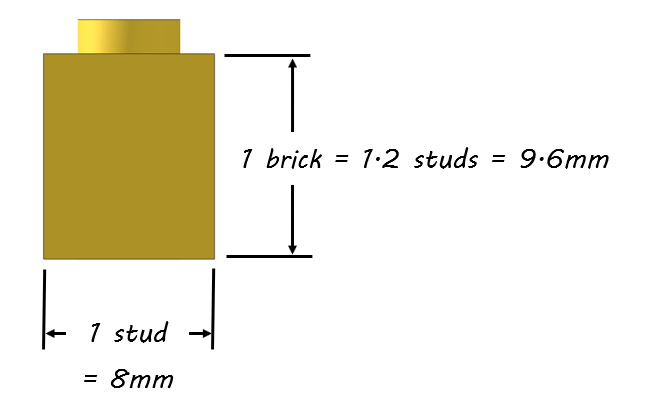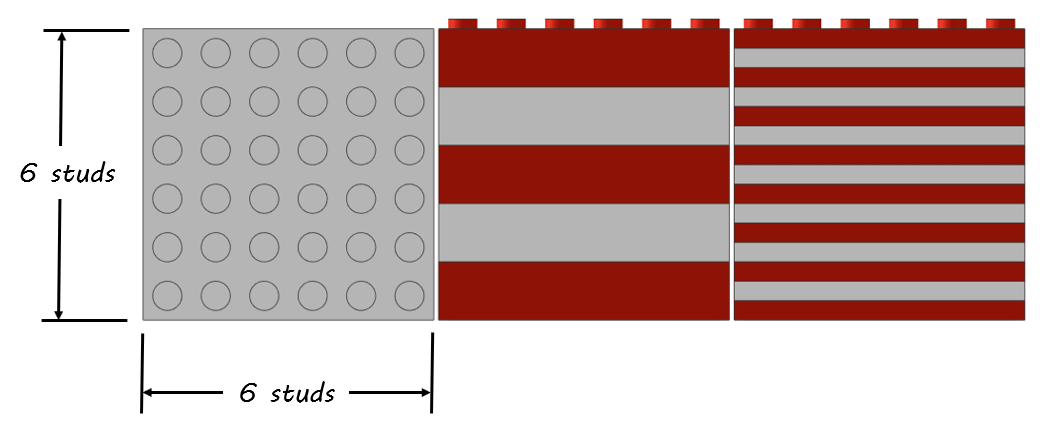Lego Geometry 101: Studs, Bricks, and Plates
The LEGO system is based upon some very simple rules. The following illustrations will cover all of the basic building elements and their dimensional relationships with each other.
The most basic LEGO element is the 2 x 4 Brick, currently available in 33 colors. The size of LEGO bricks is expressed as width by length (smaller number first), simply by counting the number of studs on top. The ‘stud’ is the first of the three foundational measurements in the LEGO system.
It may also be helpful to understand that each stud is equivalent to 8mm in length.
Lastly, and quite critically, the spacing between studs is also the same as the stud length, or 8mm. This may seem obvious, but this is a crucial design feature which results in the bricks locking together tightly without gaps. Next we’ll investigate the third dimension of LEGO, the height.
LEGO bricks are actually 20% taller than they are wide, so the height of a standard brick is expressed as 1.2 studs, or 9.6mm. However, we can simply refer to the height of a LEGO brick as 1 brick. The ‘brick’ is the second of the three foundational measurements in the LEGO system.
Here we introduce another of the most basic LEGO elements, the 1 x 1 Plate, currently available in 40 colors. Just as with bricks, the size of LEGO plates is expressed as width by length (smaller number first), simply by counting the number of studs on top. However, plates are 1/3 of the height of a brick. Therefore, we can express the height of a plate as 0.4 studs, or 3.2mm, or 1/3 brick. Of course, we will again simplify things by simply referring to the height of a plate as 1 plate. The ‘plate’ is the last of the three foundational measurements in the LEGO system.
Now that we understand the basic units of measurement in the LEGO system, we can visually demonstrate their relationship by building 6 x 6 squares in three different ways. The first part shown is simply a 6 x 6 Plate placed vertically. It is clearly a square measuring 6 studs by 6 studs. The second part shown is a stack of 1 x 6 Bricks. Because there are 5 bricks stacked together, the height of this stack is 5 bricks or 6 studs (1 brick = 1.2 studs), so it is also a square measuring 6 studs by 6 studs. The last part shown is a stack of 1 x 6 Plates. Because there are 15 plates stacked together, the height of this stack is 15 plates or 6 studs (1 plate = 0.4 studs), so it is also a square measuring 6 studs by 6 studs.
Remember:
1 Stud = 2.5 Plates = 5/6 Brick
1 Brick = 3 Plates = 1.2 Studs
1 Plate = 1/3 Brick = 0.4 Studs

